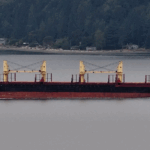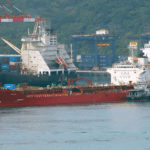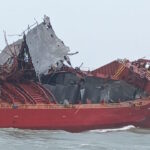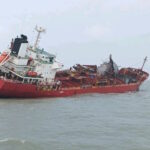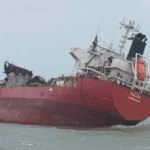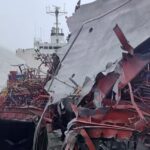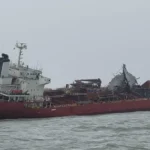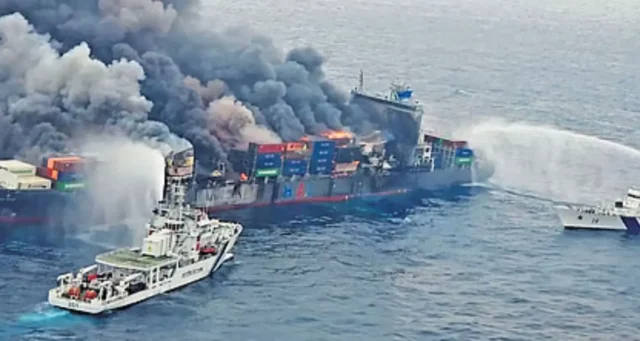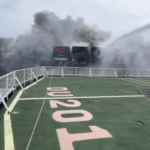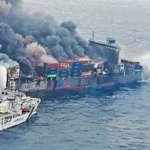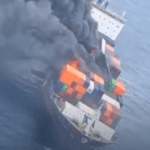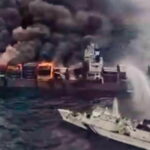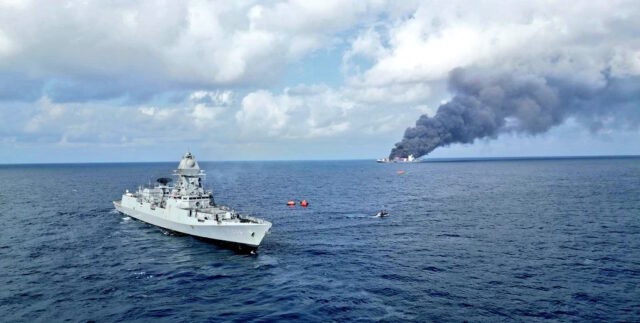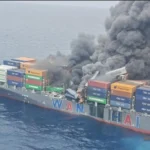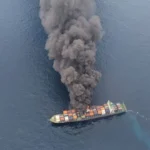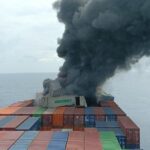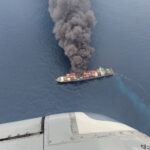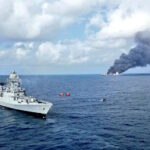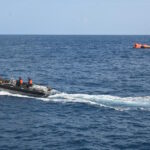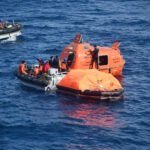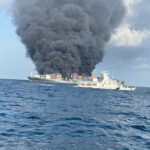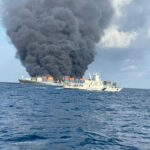Fulda
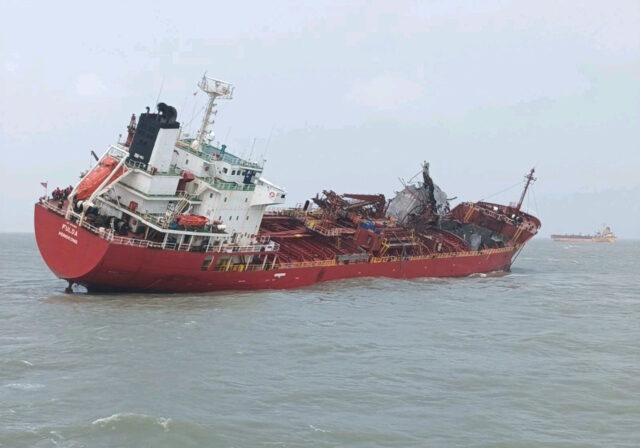
On the afternoon of July 6, the 148 meter long, 19477 dwt chemical tanker Fulda (IMO: 9185865) exploded if the Gulf of Kurch near the port of Kandla, Gujarat, India. The Fulda had completed a discharge of a cargo of methanol at the Oil Jetty No. 2 in the port in Kandla and proceeded to leave port bound for Port Sohar, Oman. A few hours later the Fulda would explode ripping up most of its top deck apart. Witnessed by the nearby 175.5 meter long, 31858 dwt bulk carrier Team Focus (IMO: 9424132), the Fulda sustained massive damage but was still afloat. The master of the tanker stated there was no underwater damage and none of the 384 tons of fuel had not been released into the water.
However, the Fulda may have suffered some water ingress to its ballast tanks as it developed a 22 degree list to starboard that shifted to port as the crew attempted to stabilize the vessel. The 21 crew on board the tanker were later evacuated by the 31.5 meter long tug Orchid Star (IMO: 9658850) which had been dispatched from Kandla. No details were reported if any crew had been injured from the incident.
Indian authorities dispatched multiple vessels from the Coast Guard along with multiple tugs to monitor the Fulda. The Coast Guard has sent out alerts to keep all vessel traffic away from the tanker due to the potential of fire or pollution being released. Latest reports state the Fulda was taken under tow back to Kandla.
The cause of the explosion is under investigation. Initial reports suggest the explosion was due to the improper venting of flammable vapors during the discharge. There has been no reports if the Fulda was in the practice of using inert gassing or if it allowed an air-vapor mixture to to build up in the tanks like what occurred on the Sansinena explosion in 1976. That explosion was so massive that sections of the vessel sent burning rivets into the air into the surround area and lead to changes to regulations on how venting was done on tankers.
